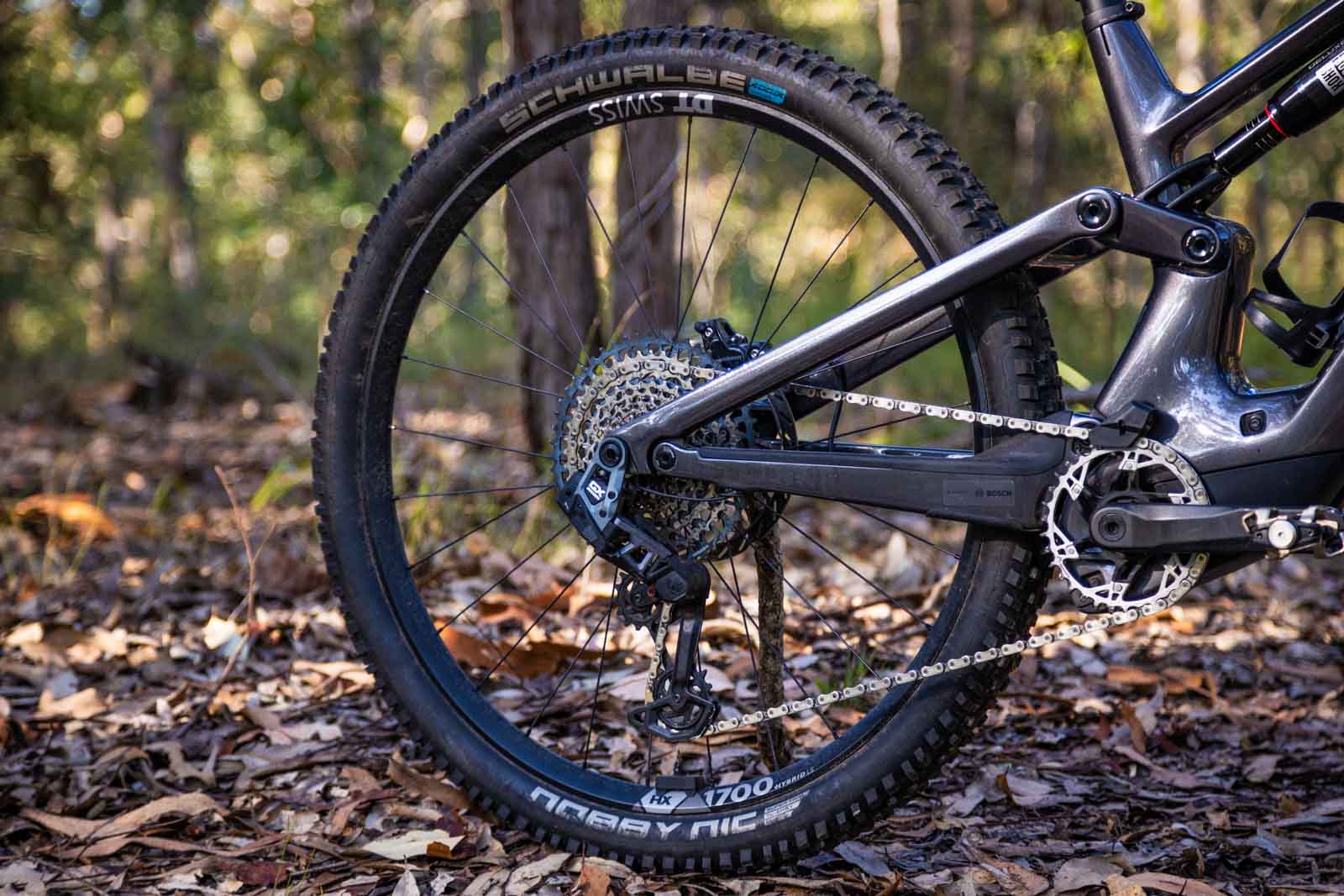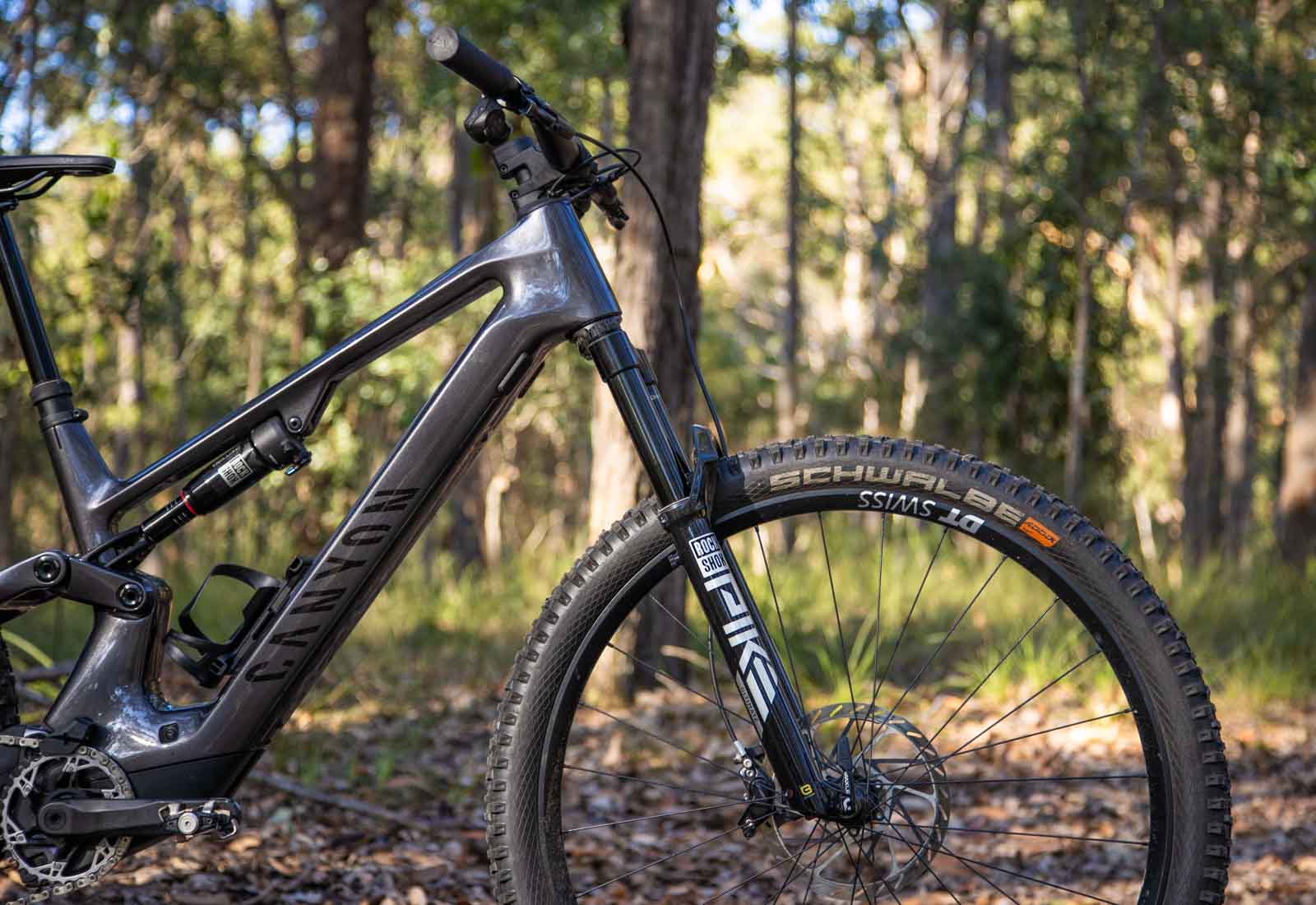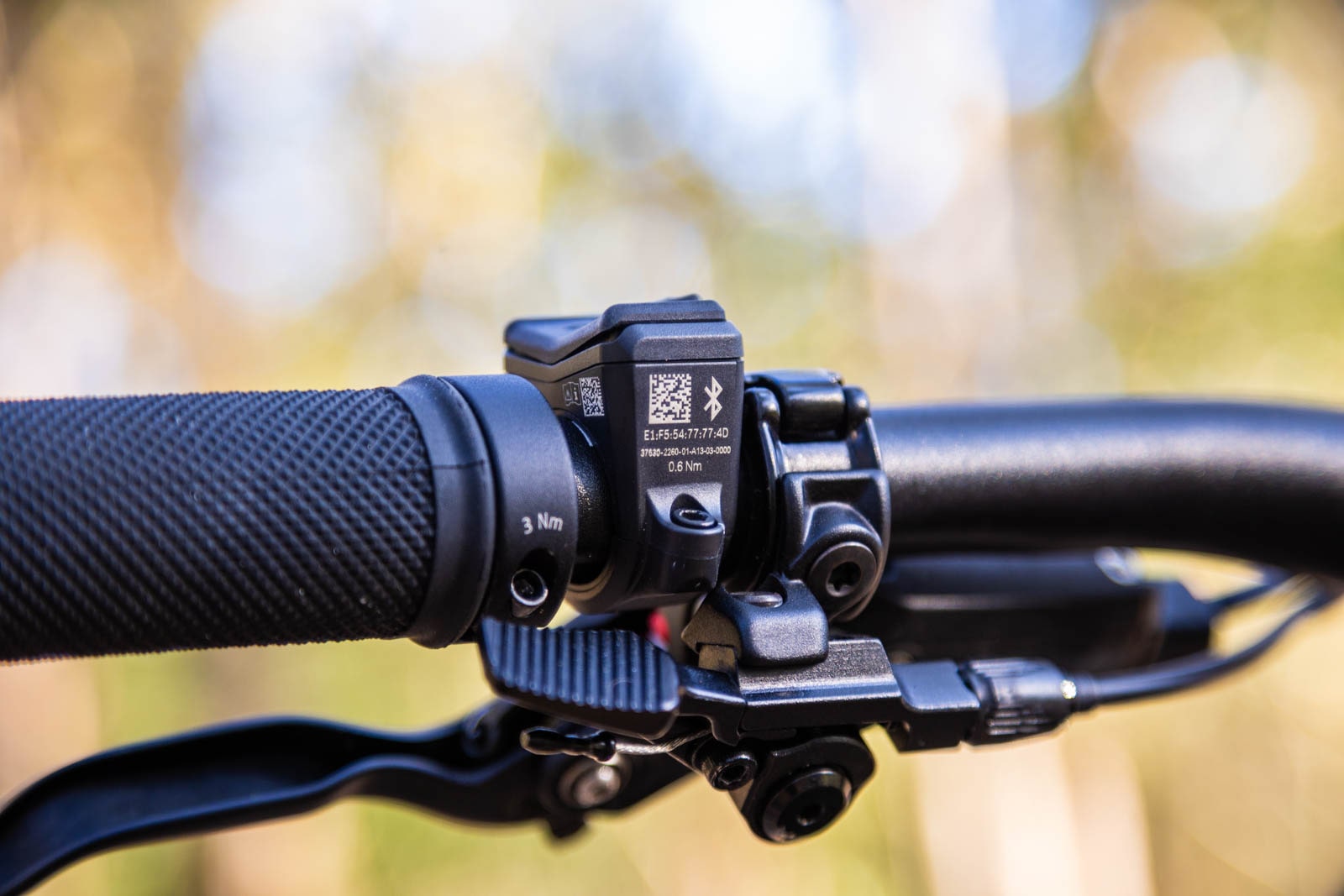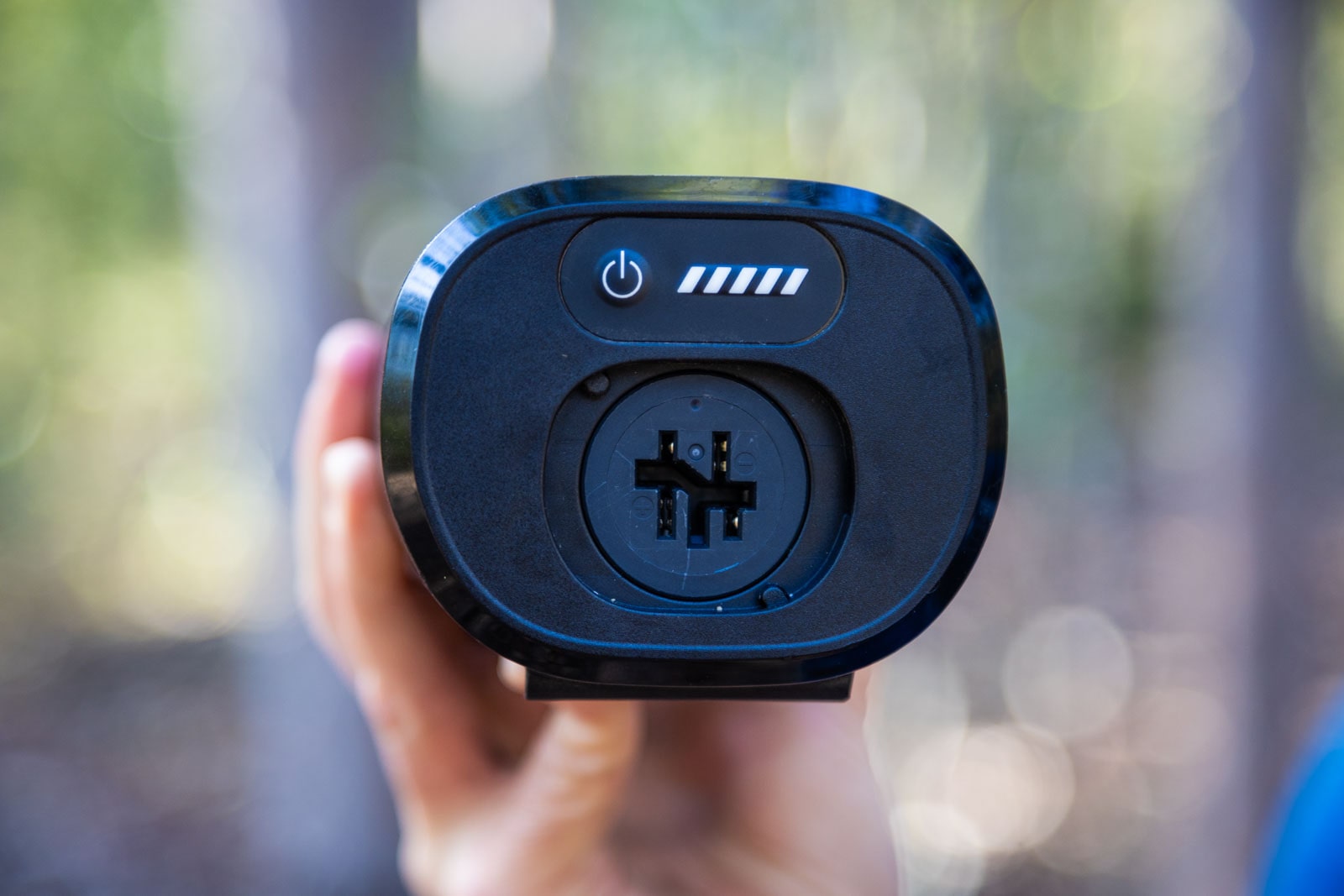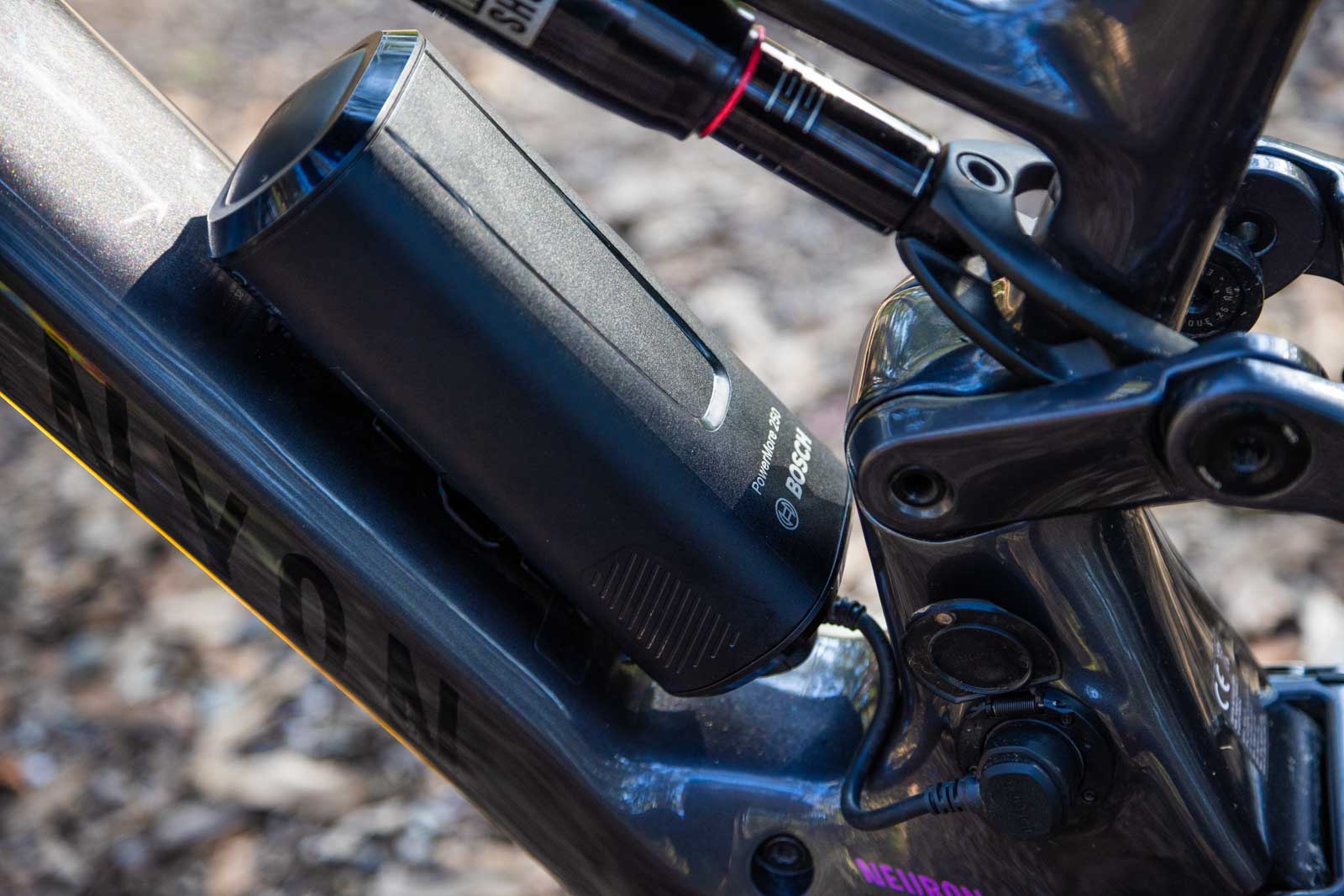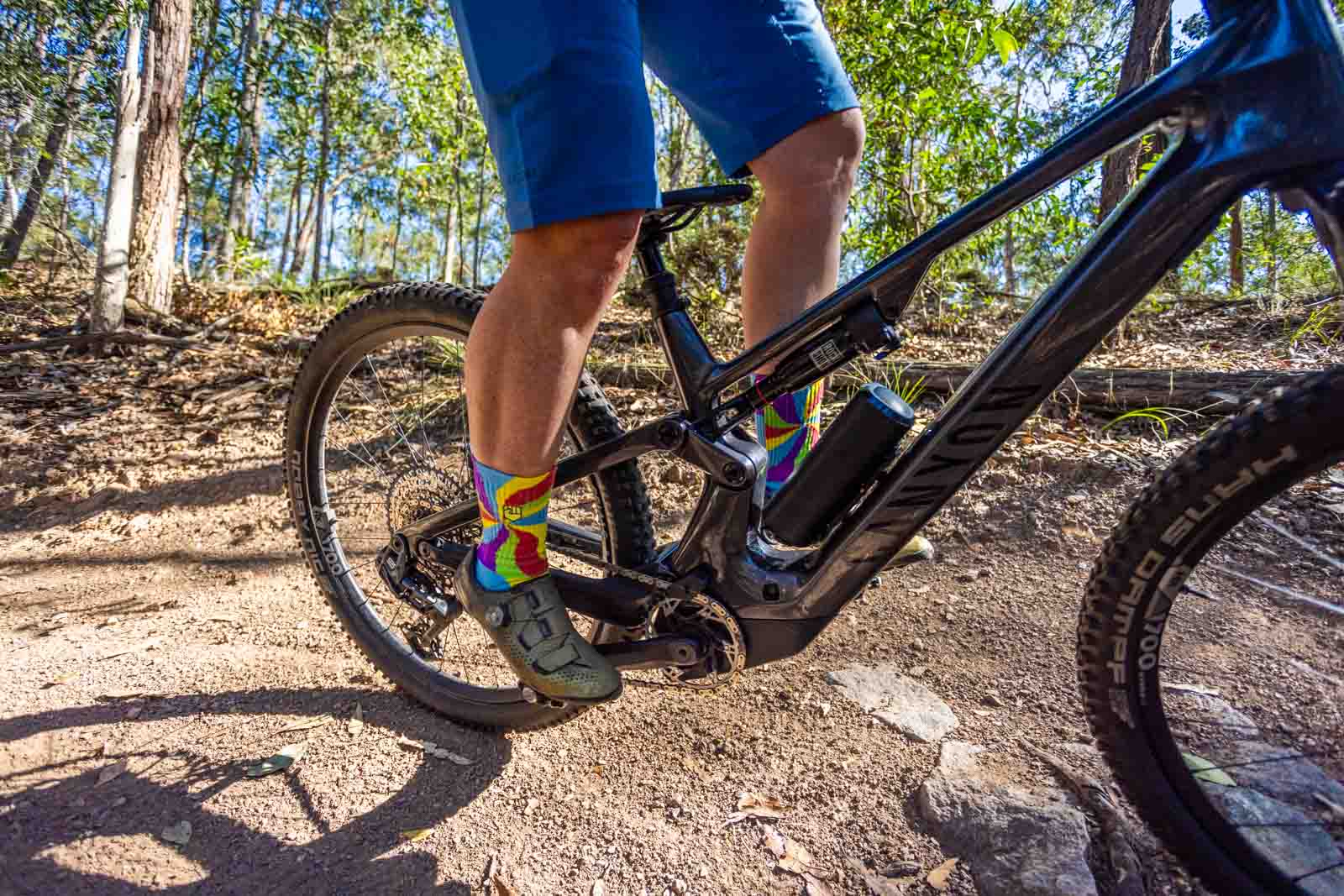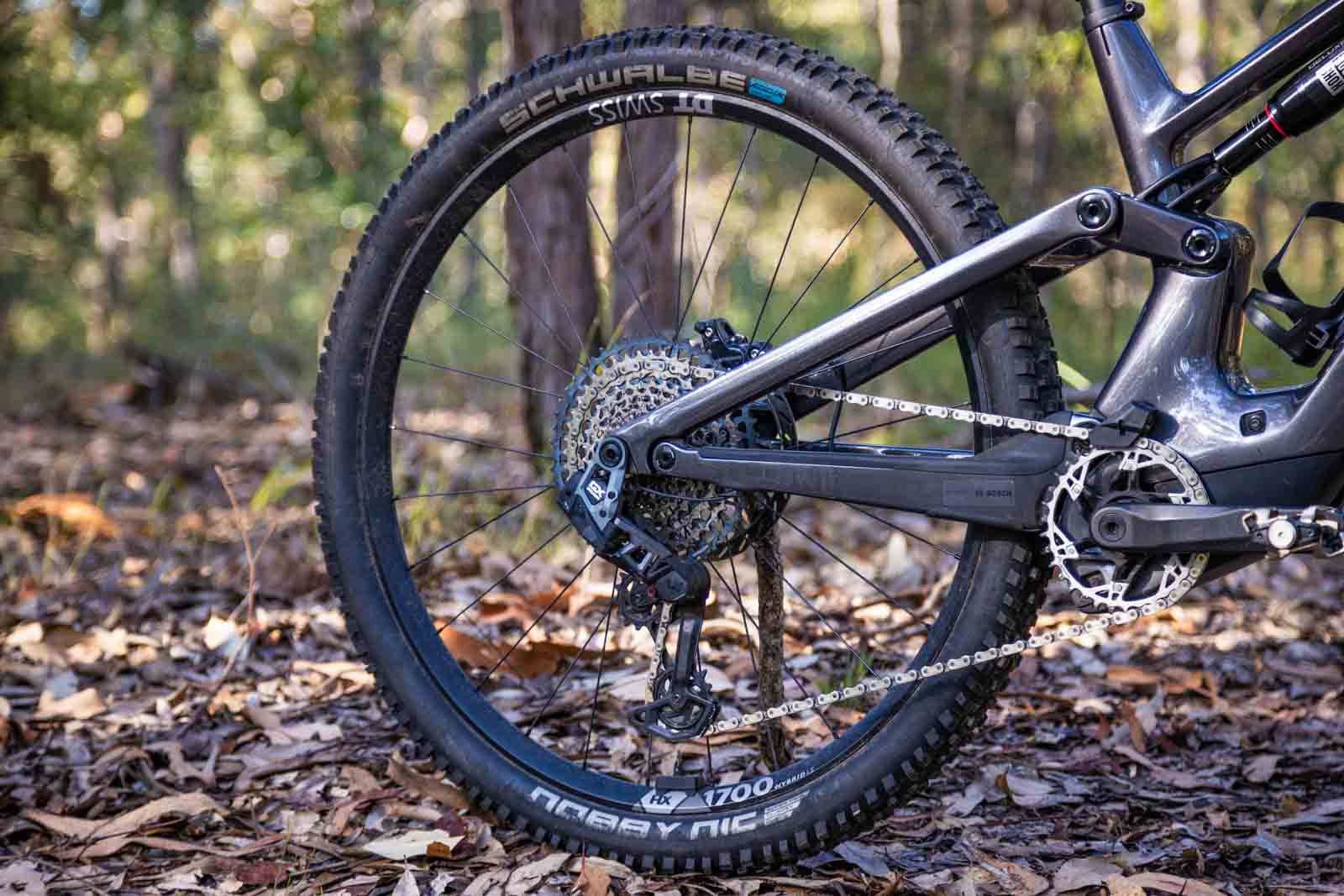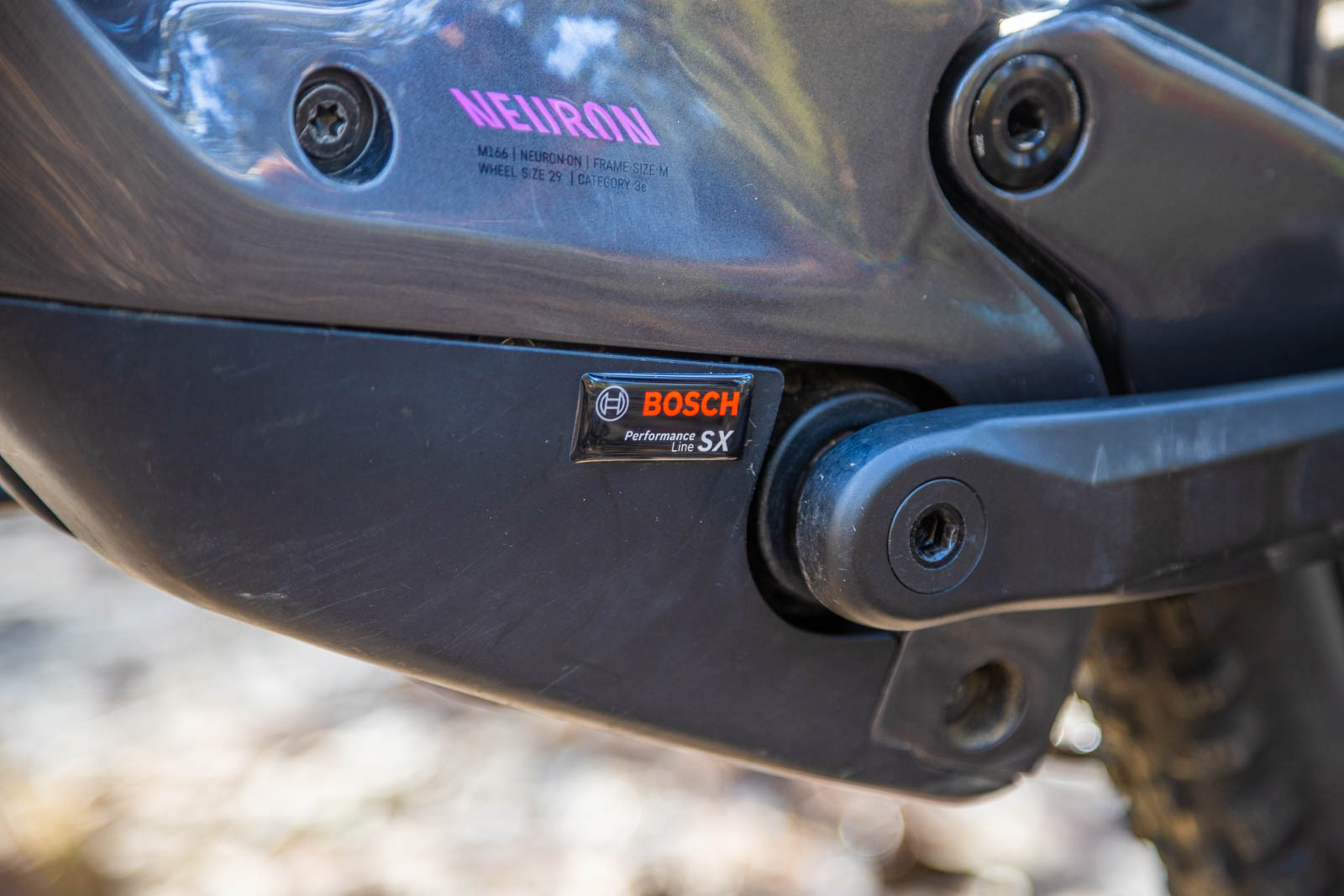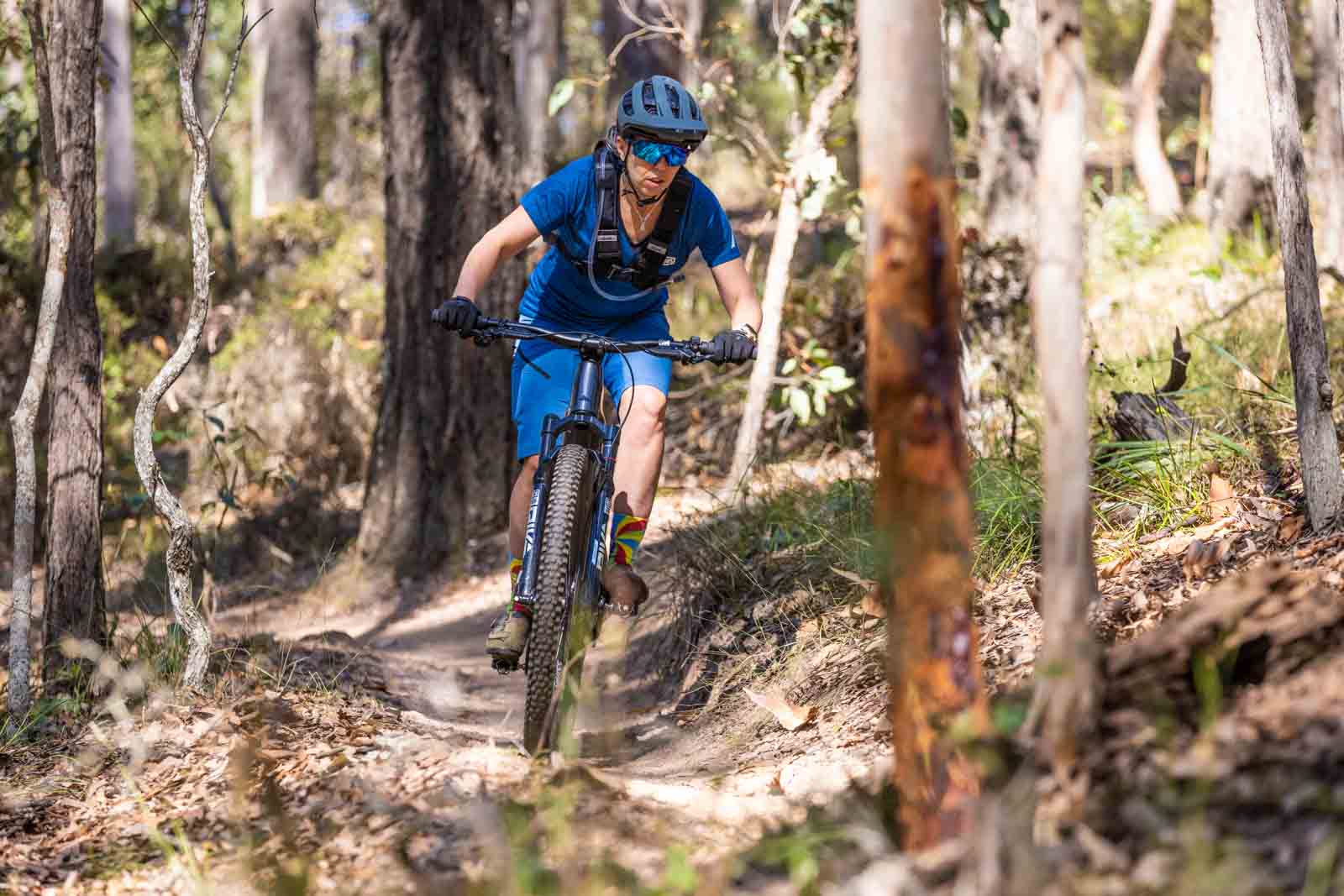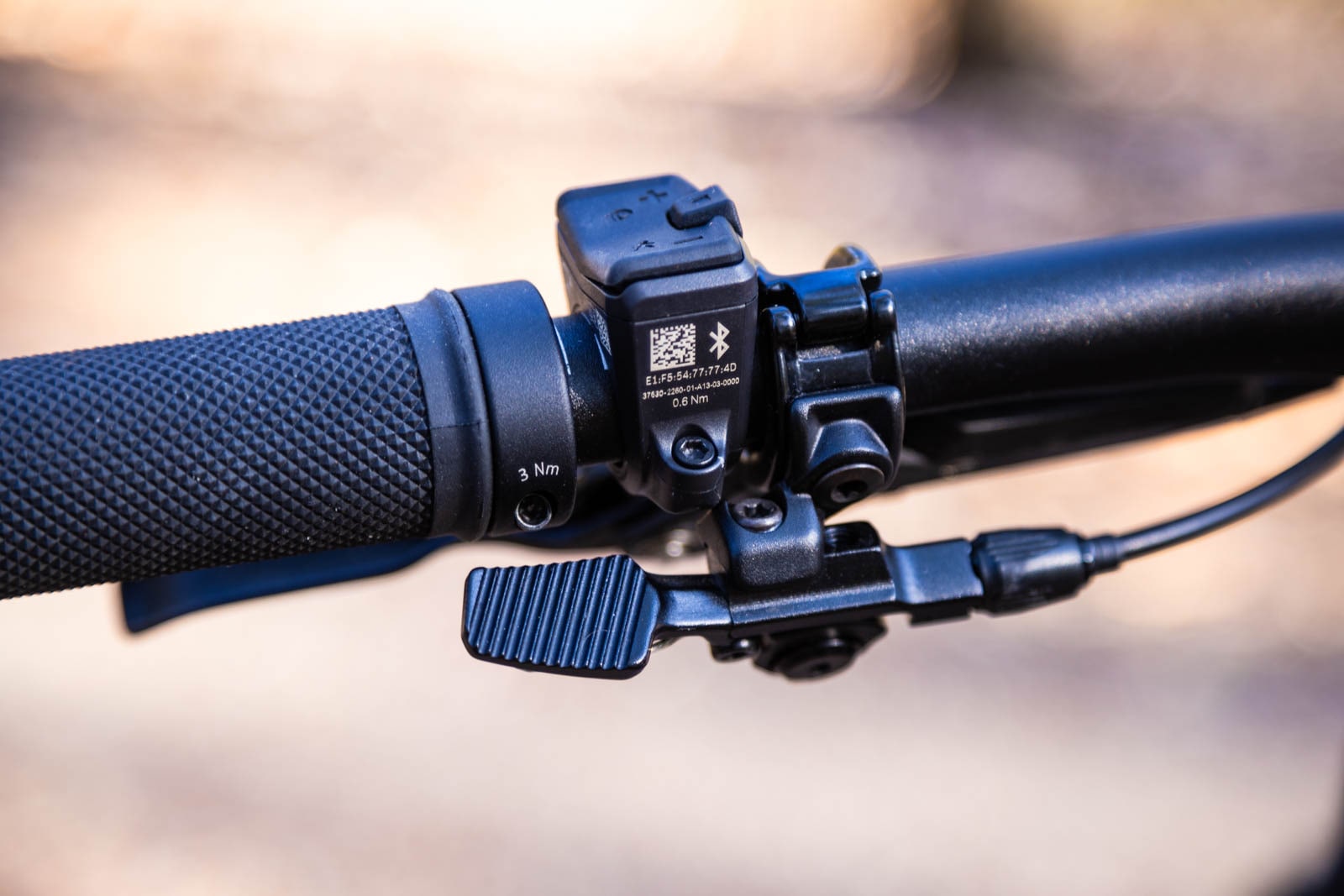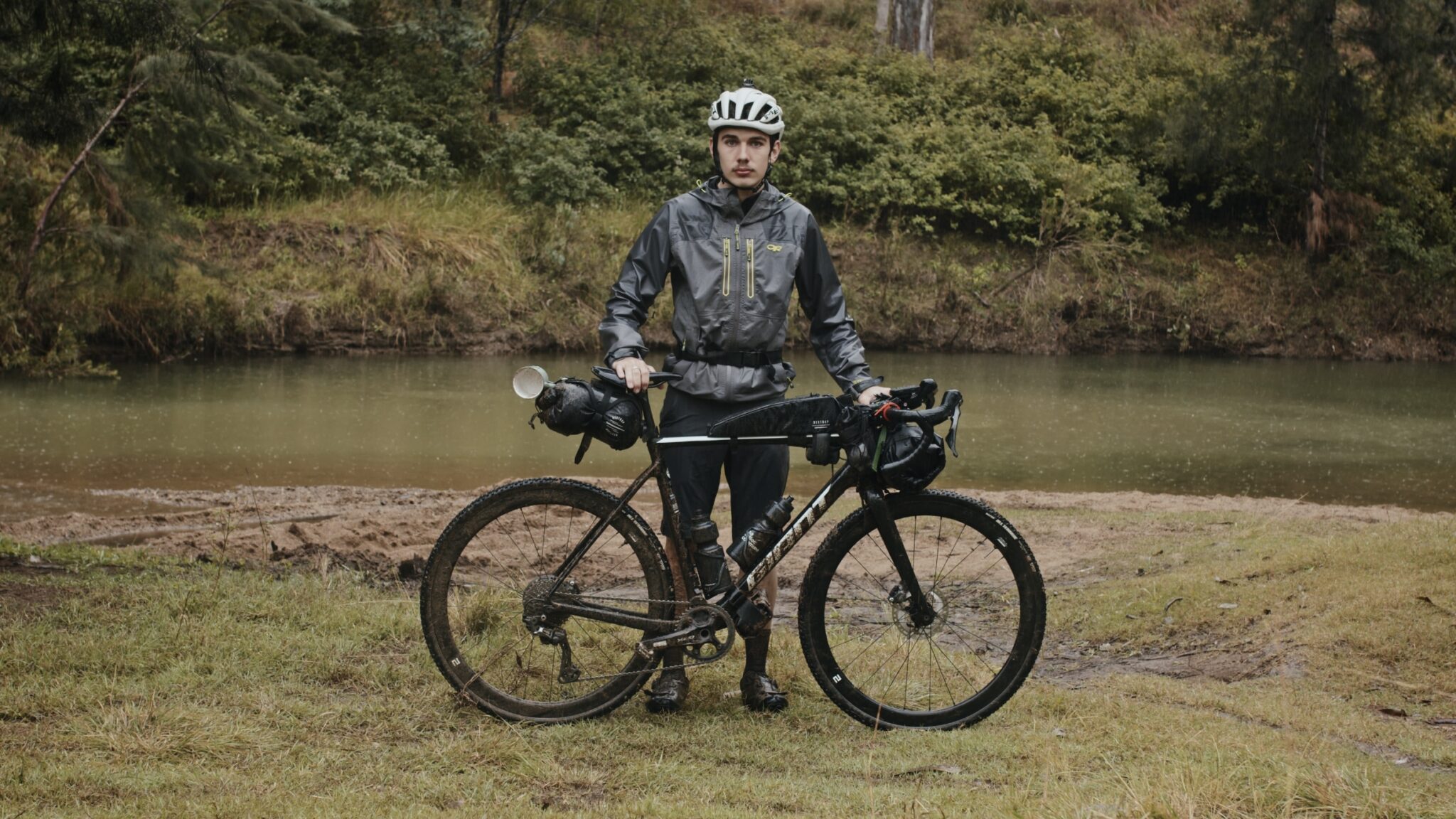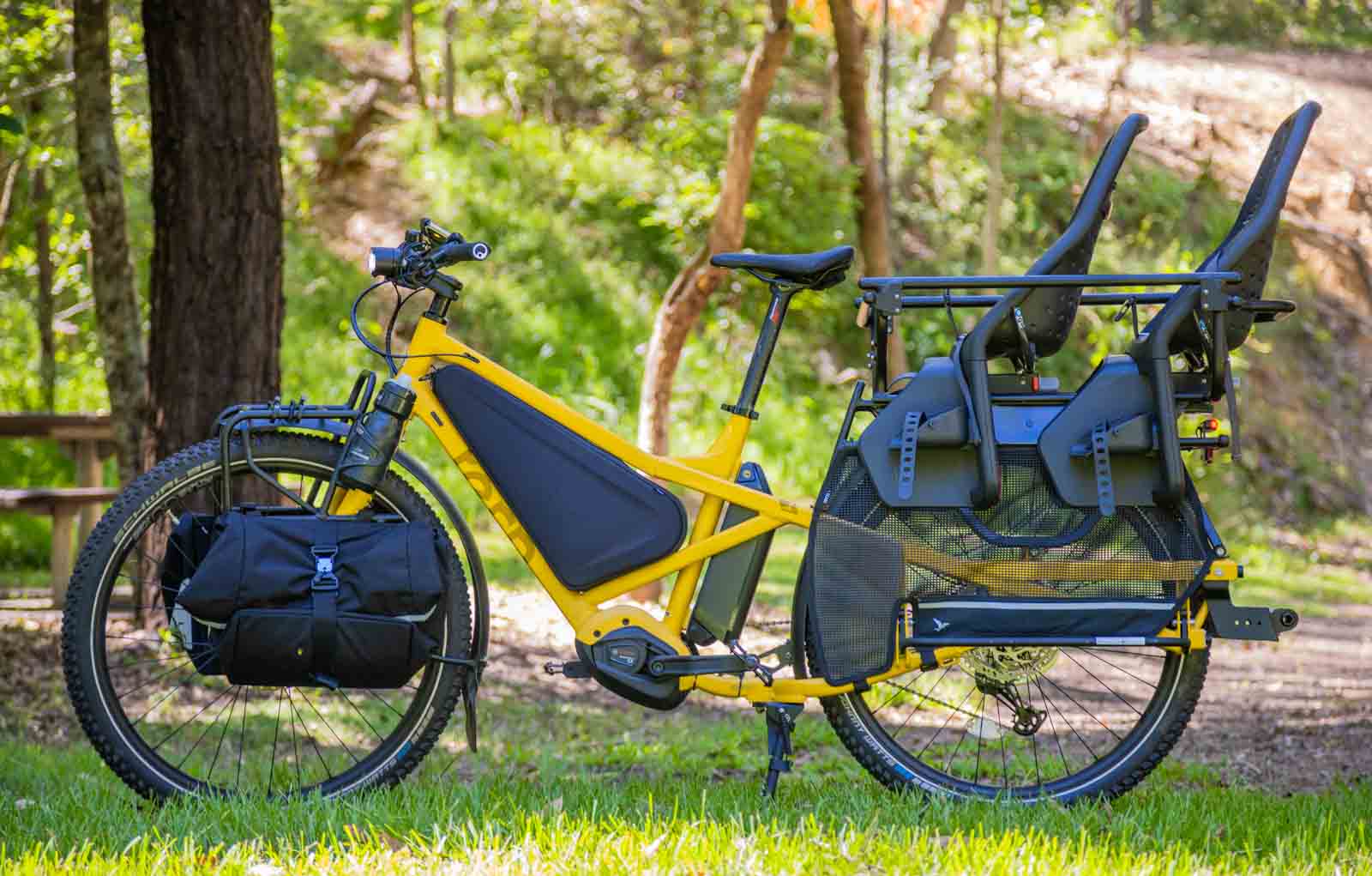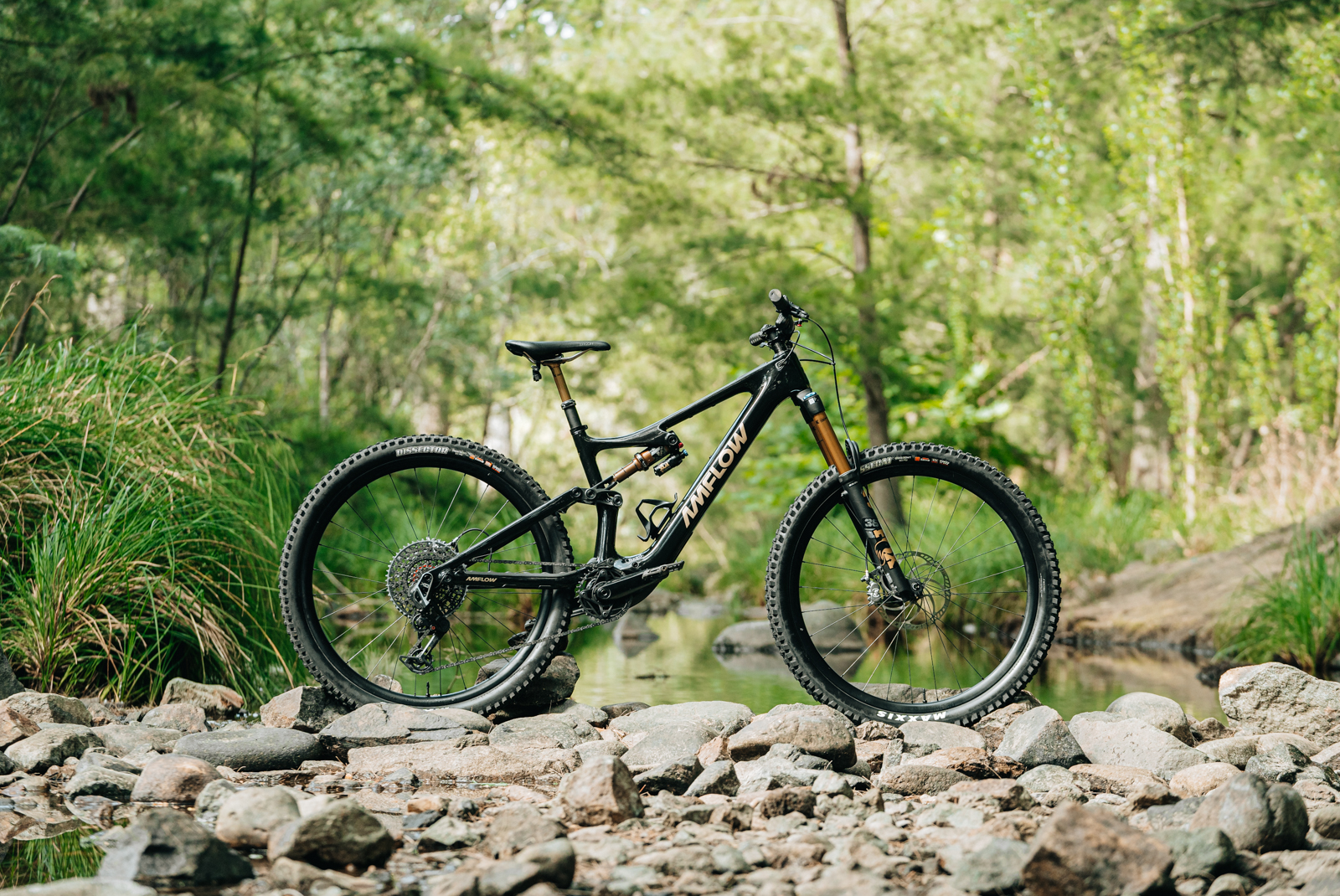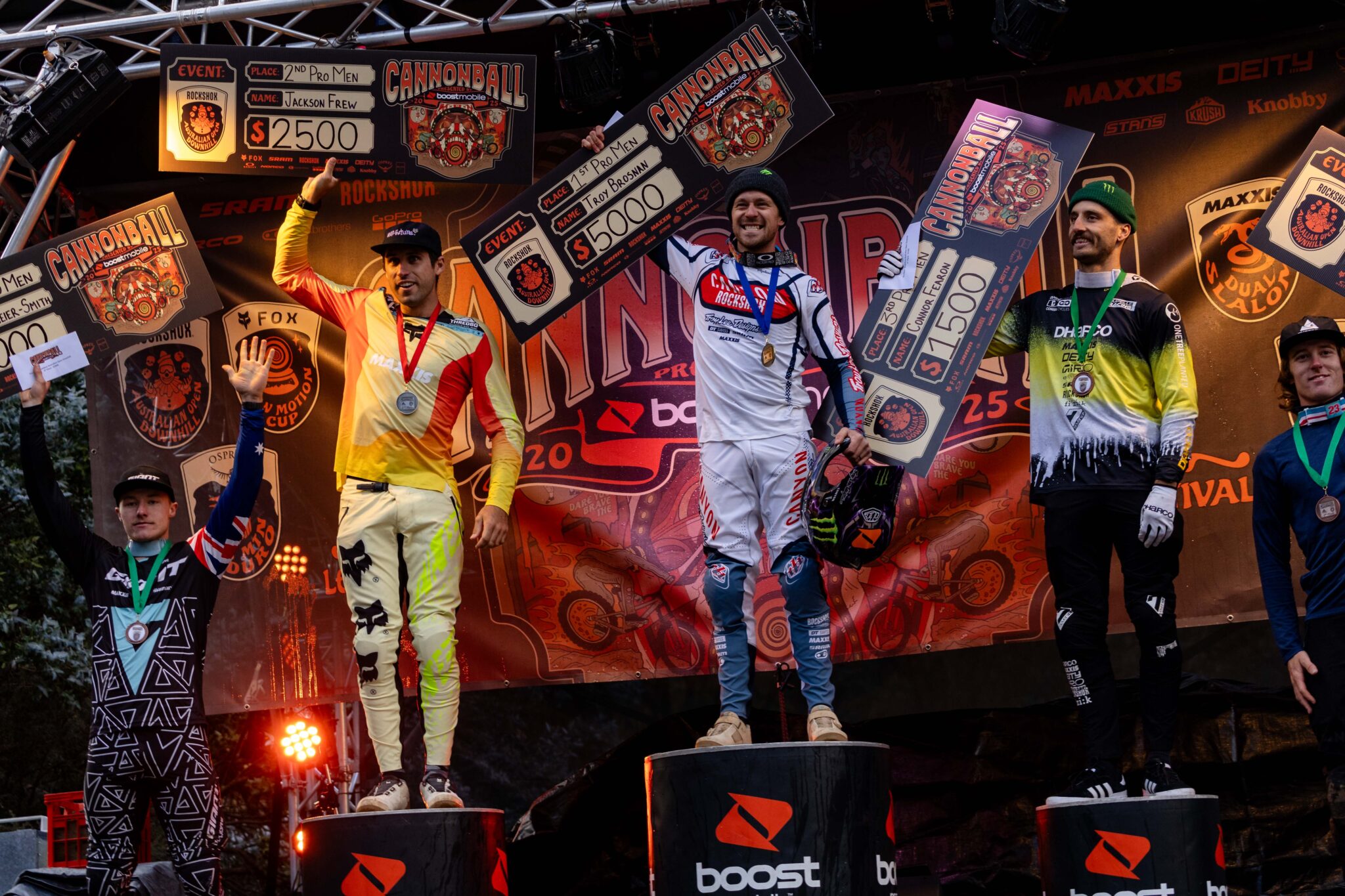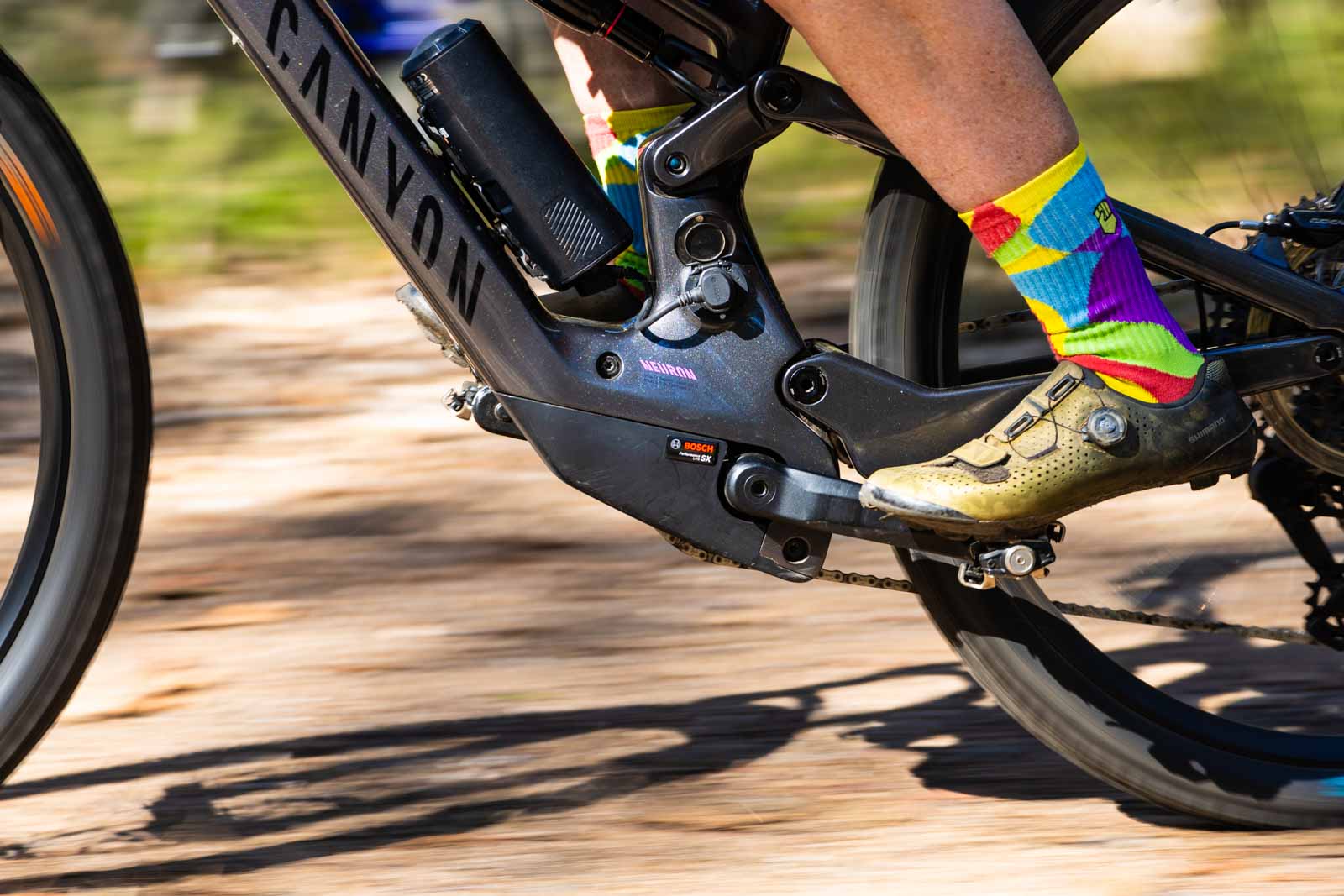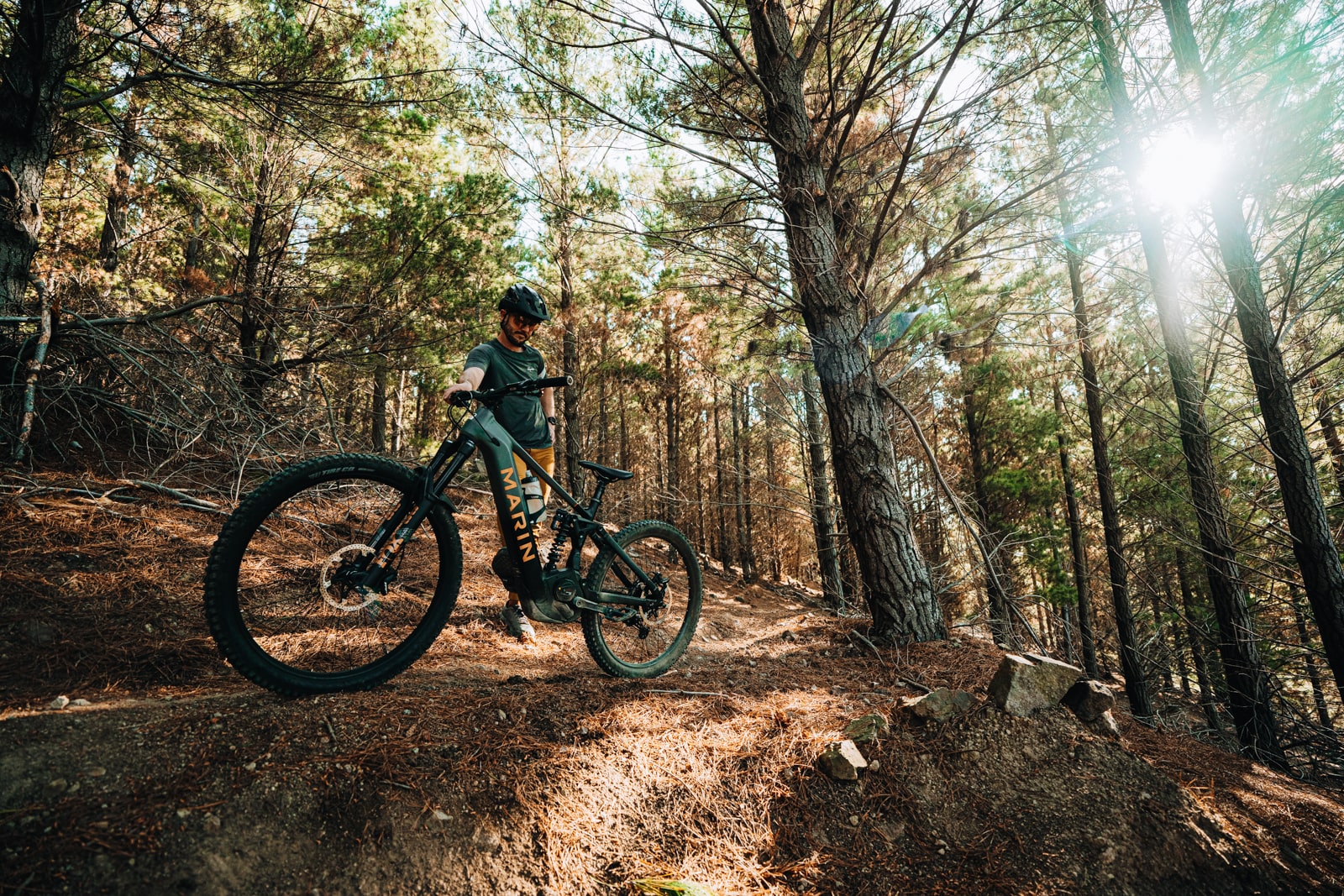The last time I rode an eBike in the lightweight category, it was when I was pregnant. Tired, out of breath and wanting to ride my bike up climbs that required more out of me than I was able to give, I realised that perhaps eBikes may have finally found a place in my life. However, previously I found that lightweight bikes have been a little…anaemic. While they could pack a punch with turbo mode, the low and moderate support modes left me a little bit wanting in terms of the level of support and engagement I needed.
Moving on a year and a bit, I remain eBike curious, but have found full-powered eBikes to be a bit too big in terms of travel and ‘pow’ for the trails I ride and experience I am seeking. A pedaller at heart, the Bosch Performance Line SX drive unit is one that – on paper – fits the bill, delivering a mountain biking experience with all the support you need, when you need it. I tested the drive unit aboard a Canyon Neuron ON:Fly CF 7. From bike parks to secret squirrel trails and daycare drop-offs, we did it all.
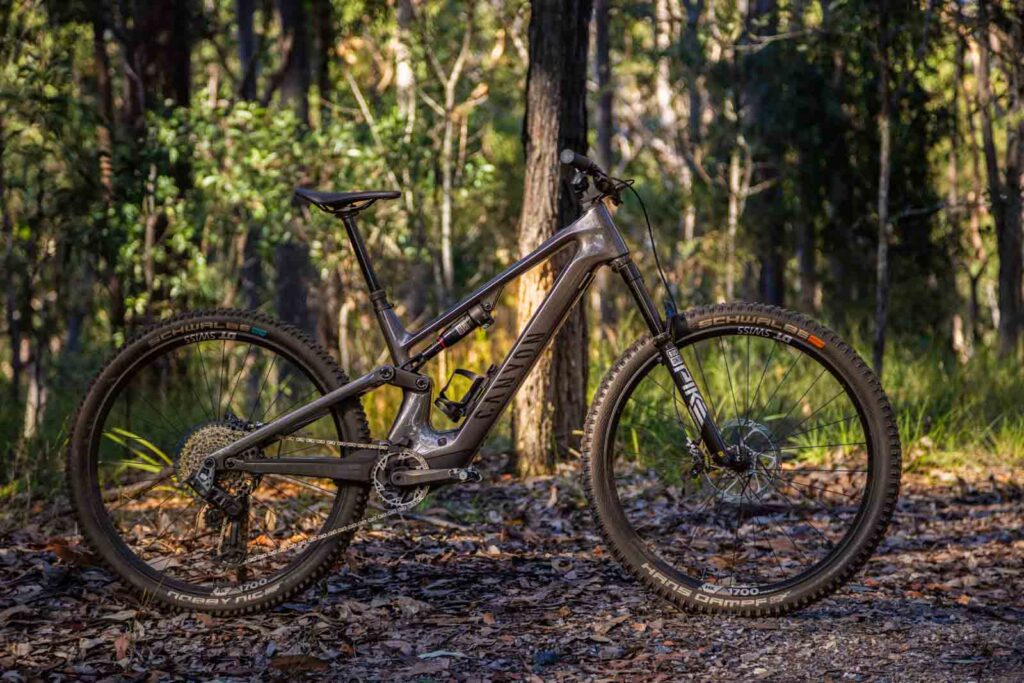
A Closer Look at The Bosch Performance Line SX Drive Unit
But firstly, why the SX drive unit? The Bosch SX drive unit is designed as a model that prioritises the pedalling experience, shaving weight off their more torque-driven CX line drive unit, reducing bulk to deliver slick lines reminiscent of an acoustic bike aesthetic. A slimline magnesium casing results in a 2kg unit weight, a reduction of nearly a kilogram compared with the new generation CX at 2.8kg. The smaller, slimmer casing results in a narrower Q factor (or the width between cranks), which allows for a natural pedalling action similar to an analogue mountain bike.
READ: Bosch performance Line CX Drive Unit
In terms of battery life, the Bosch Performance Line SX drive unit is paired with the 2kg, integrated 400-watt hour CompactTube 400 Battery. The CompactTube is the highest energy density of all Bosch batteries and boasts 50% charge in 1.5hrs and 100% in 3.5hrs, making it perfect to also use on your commute or on an overnight flashpack. The lightweight package of the SX drive unit allows the bike to retain the ‘feel’ and manoeuvrability of an acoustic trail bike with the power of a drive unit. For reference, the bike we tested weighed under 20kg with pedals.
A 400Wh battery is on the small side if you’re headed out on longer adventures, so for the long-range warriors, the PowerMore 250 range extender (weighing in at 1.5kg) takes you up to 650-watt hours of battery life, essentially giving you the range of a full-cream eBike. This mounts in the bottle cage, so get your pack ready for the big days out.
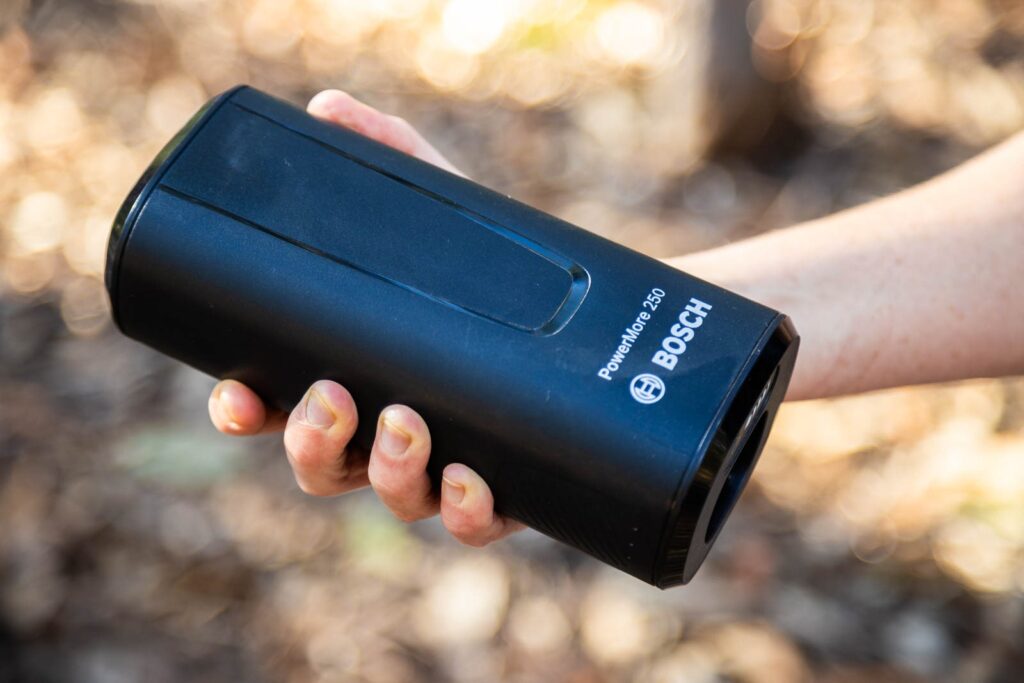
The SX drive unit is specifically designed for lightweight eMTBs but still features the same maximum 600W support that is available in the full-cream CX unit. The SX has a reduced max torque output of 55Nm (compared to the CX’s 85Nm), and reaching the maximum 600w requires a cadence of over 100rpm. At 70rpm, the maximum power output of the SX unit is 400w: still nothing to sneeze at, but a very different user experience from the 600W delivered at 70rpm with the CX drive unit. This cadence-driven power delivery is a key difference between the two drive units.
The Bosch Performance Line SX’s power delivery is described as sensitive, requiring the rider to shift and focus on pedalling with the terrain instead of mashing gears. This may disappoint those who prefer to turn the eBike on and grind away at 40rpm to the top of the trail, but for those who enjoy the sense of one-ness and the joy of effort that pedalling a bike delivers, the SX drive unit allows an experience that centres the rider as the pilot and co-engine. As for the maximum speed, it is, of course, capped at 25km/hr. The maximum support level tops out at 340%, and the SX drive unit retains the smart walk feature, activated by the bar-mounted Mini Remote.
READ: Is range anxiety still a thing for e-bikes?
Handy light indicators tell you if you’re in Eco (green), Tour+ (blue), eMTB (purple) or Turbo mode: all the existing Bosch mountain biking modes. You can also change modes using the System Controller, in addition to the Mini Remote, and the SX system is still compatible with the Kiox units. Want more customisation? Sure! This is, after all, a Bosch product, and their excellent Flow app allows the rider to customise support levels and torque in each mode for an individual ride experience.
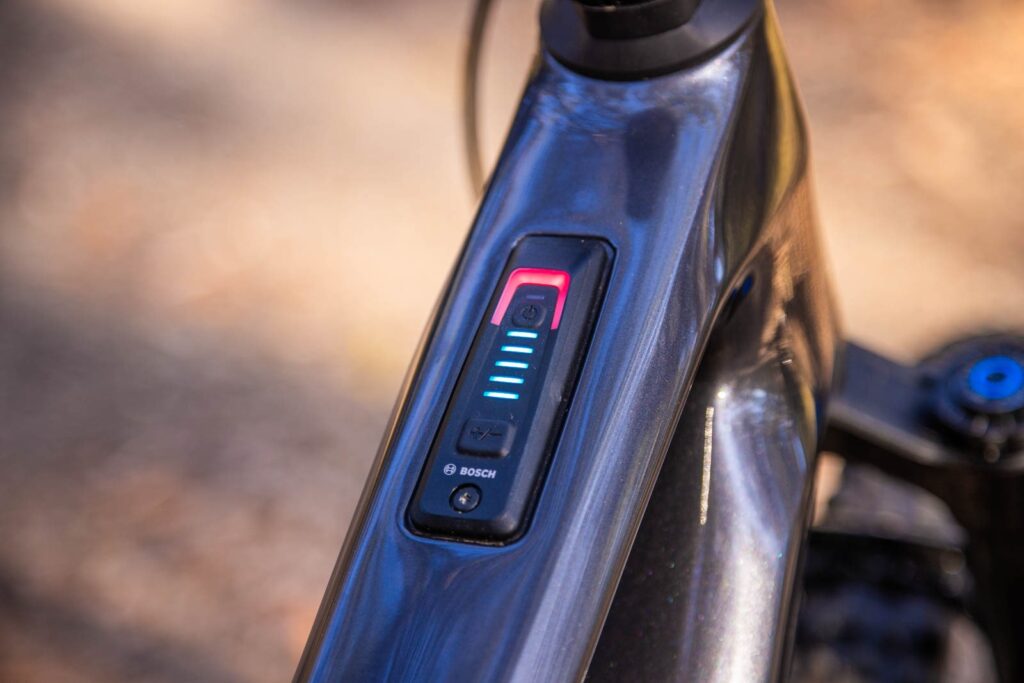
On the trail
Bosch have claimed a quieter drive unit with the release of the Bosch Performance Line SX, and they have delivered. While the motor still has a mild discernible ‘whirrr’, most noticeable in turbo, it isn’t obtrusive. You can hear the faint engagement and disengagement of the drive unit when cruising at the liminal speed of around 25km/hr or when dropping into trails, however it isn’t distracting and marks a departure from the more audible earlier generation of the Performance Line CX drive unit.
Less torque is a key difference between the Bosch Performance Line SX and other drive units. With a torque of 55NM, it isn’t as sporting or ready to sprint off the line, but this results in a bike that puts out what you put in. This translates to less jump or pull from stationery and low-speed movements on the trail. With the motor primed to offer more assistance at a higher cadence, I found that the lower torque actually serves the rider with a more integrated, authentic riding feel and a smoother, more natural power delivery.
In essence, the feeling of the Bosch Performance Line SX is that of amplification rather than raw power, for those who love to plowing through trails with minimal exertion on a full-cream eBike this may not be the experience you’re seeking.
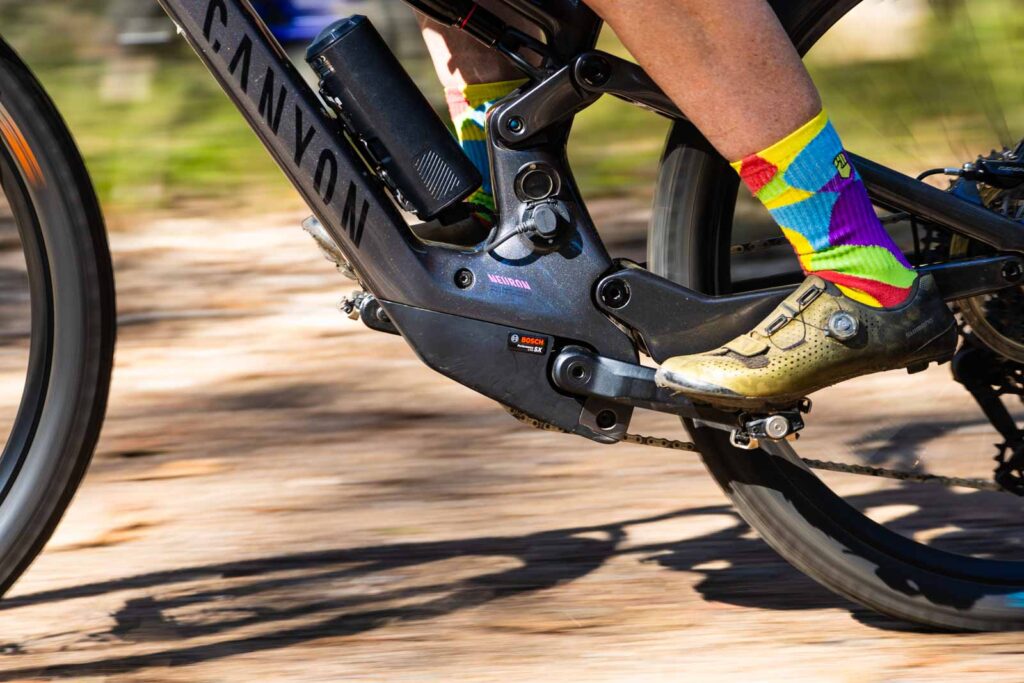
However, this isn’t to say that the bike is at all anaemic; after all, it still has a 600W peak power. The way in which it divvy’s the watts out does, however, alter rider behaviour. For example, on my first ride I went out and like any rider with a new eBike: I found the most unhinged, vertical landscape to point the bike up.
How did it go? I managed 850m vertical in less than an hour in only 13km. Initially, it was a strange sensation to get used to, hitting up unridable climbs (well, unridable on an analogue bike) littered with baby-head rocks and no distinct line. On an analogue bike, you would be pressing through the pedals with low cadence to attempt to grind up and maintain traction, the SX doesn’t thrive on the grind. In fact, it offers a very paltry assistance with that kind of pedalling behaviour.
Check out our latest E-bike reviews
READ: Trek Slash+ 9.9 eMTB Review
READ: Marin Alpine Trail E2 Review
READ: GASGAS MXC 5 Review
Instead, I had to alter my rider behaviour and spin whenever terrain pointed upwards, which seemed counterintuitive on such savage gradients, however it didn’t take long to adjust and get the most power out of the unit.
Despite this, for long drawn-out climbs (think 10min+) it’s quite difficult for the mere mortals among us to maintain a cadence >100 as it is aerobically very taxing. While you still have assistance at lower cadences, to really get the most out of the drive unit it is best to spin to win.
Considering the terrain mountain bikes cover, it could be prudent to reduce the cadence required for full power in future drive unit updates, even if only a modest decrease to 90rpm would make a significant difference in rider experience while maintaining the more smooth and integrated feel of the SX unit.
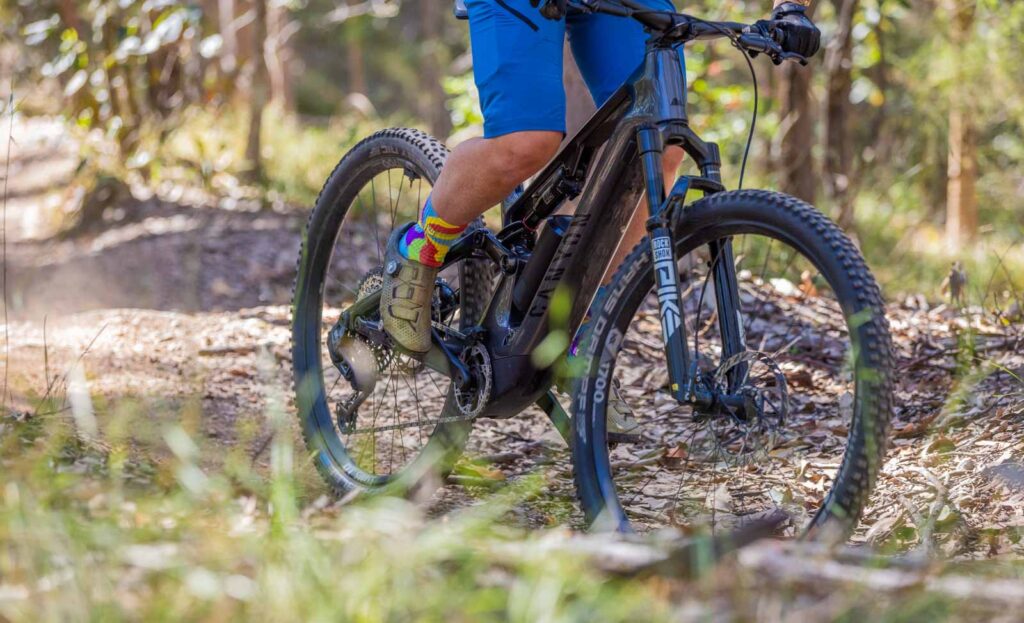
When hitting technical, undulating trails, the drive unit really comes into its own as you find that rhythm and flow of pedalling, gathering speed and pedalling ahead of obstacles, and resetting to a more neutral cadence. It was during these times when the drive unit really flourished, just general trail riding on undulating trails. The SX drive unit operates much more like yourself riding, but better.
Talking range is difficult to express range as an absolute: as with everything mountain bike related, it depends on many variables. As a 63kg rider, I represent a pretty average female rider or a lighter weight male rider, this will have a huge impact on battery and feel of power delivery when the terrain points upwards. On eMTB without a range extender, we managed around 40km lot of hills. With the PowerMore range extender I actually ran out of time on my long ride to drain the battery. After more than three hours, 1600m vertical and nearly 60km of pony trails, bike park single track and sketchy off piste adventures, I had enough battery left to boost up the 1.6km/200m climb home and still have a single red battery light remaining.
Final thoughts on the Bosch Performance Line SX
The Bosch Performance Line SX may not be for everyone, but it is one for the dedicated mountain biker who enjoys the feel of an analogue mountain bike with the powerful assistance of an eBike. Instead of the ‘full power off the line’ experience offered by the CX model, the power delivery of the SX unit is more nuanced, while still packing a punch when it matters.
If you’re a rider who wants to cruise to the top of the hill as fast as possible while pedalling slowly, this isn’t the drive unit for you, but if you’re someone who enjoys the feel and manoeuvrability of an acoustic bike paired with a natural-feeling power delivery in a package that can pass as a non-motor-equipped bike, then the delights of Bosch Performance Line SX may be for you.
Pros:
Lightweight
Full Bosch Smart System integration
Powerful for the engaged pedaller
Cons:
Still audible, though quieter
Not for the shuttle pig with low RPMs
